Spring trip to Italy. Part 6. Padua

A spring trip to Italy. Part 1. Trento >>>
A spring trip to Italy. Part 2. Mantova >>>
A spring trip to Italy. Part 3. Brescia >>>
A spring trip to Italy. Part 4. Treviso >>>
A spring trip to Italy. Part 5. Vicenza >>>
Before that, we had already been on a sightseeing tour in Padua, so stories about sights and photos will be from different trips.
From Vicenza we drove to Padim. To go about twenty minutes, arrived after lunch.
Padova, which is today the administrative center of the province of Venice (another name is Veneto), was founded in the 11th-10th centuries BC. e. In terms of attractions, this city is a cornucopia.
Padua is an island formed by a bend of the Bacchiglione river and canals.
In the Middle Ages, the city was reached by water from Venice. Now some of the canals are filled up, but the rest are a picturesque sight.
In the distance you can see the Basilica of Santa Maria del Carmine (Basilica del Carmine, 16th century):
There are also ancient bridges, like this Ponte Molino - an ancient Roman bridge, restored in the 13th century:
In the center of the city there is also the original Roman bridge Ponte-Romano-di-San-Lorenz of the 2nd century BC. e.
Now there is a museum.
On one of the bridges we cross the canal on the way from the station.
We approach the Arena Park,
named after the remains of an ancient Roman amphitheater of the 1st century AD. e.
There is the 13th century Eritani Church, known as the Church of the Hermit Brothers (Eremitani) due to their monastery and hospice (now museums), which widely received pilgrims. The entrance to the church is free.
The famous architect Fra Giovanni Eremitani created these beautiful wooden vaults without supports:
Unfortunately, in 1944 the church was badly damaged during the Anglo-American bombardment. Fragments of several frescoes have been preserved, including those of Andrea Mantegna.
The church contains the tombs of two 14th-century rulers of Padua.
Found in the ruins after the bombing, small colored fragments of Mantegna's painting are complemented by gray outlines of the lost images.
Nearby is the Hermitani Museum (Archaeological Museum and the Museum of Medieval and Modern Art). In the same place, the main artistic attraction of Padua is the Scrovegni Chapel, it was built at the expense of the merchant Scrovegni in 1303. The architect and author of the frescoes was the Italian painter Giotto, who finished painting the church in 1305.
It is very difficult to buy tickets, mainly through the Capella's website on the Internet. There is a very strict control at the entrance, even items from the pockets were forced to be taken out and packed in a transparent bag. Visiting the chapel at a certain time, first they show an introductory film about the history of the chapel, then the time for inspection is 15 minutes.
It is from these works that art critics count the beginning of the Renaissance. 15 minutes, of course, is not enough, because there is a very large number of frescoes. When we visited the chapel a few years ago, photography was strictly forbidden. Recently allowed, so I give a photo from the Internet:
In the chapel is the tomb of Enrico Scrovegni, behind the altar is the work of Giovanni Pisano:
Next, we move along the main street of the city, which has different names in different sections: Garibaldi, Cavour, Umberto 1.
Opposite the Hermitani complex is the building of the Museum of Decorative and Applied Arts, Palazzo Zuckermann, built at the beginning of the 20th century.
There is also a tram with a monorail in the city:
Via Garibaldi leads to Piazza Garibaldi with the Immaculate Conception Column, which once housed the ancient forum.
The network of shopping streets already starts from here, the main one is Santa Lucia.
On this street stands the church of the same name, Santa Lucia, last restored in the 17th century, next to it is the Oratory of San Rocco (1542).
After passing Santa Lucia Street, you can go to a very beautiful small square of San Nicolo with a bell tower and the church of Parrocchia di San Nicolo.
The streets of Padua with galleries, reminiscent of Bologna or Turin.
Let's go to the small square of Antequer:
The sarcophagus on high legs is attributed to the Trojan Antenor, who, after the fall of Troy, managed to get out of the city alive and, having reached these shores, founded a settlement that later became a Roman city called Patavium. In 1274, an ark was discovered with the body of a warrior with a sword, dressed in ancient armor, and they decided that it was none other than Antenor himself. Nearby is a small sarcophagus of the poet dei Lovati, who was the author of the idea with Antequer. Behind the sarcophagi is the Palazzo Prefecture.
On the opposite side of the Palazzo Romanin Yakur, where Dante once hid from persecution.
Let's move on to Palazzo Bo. The palace was founded at the end of the 15th century and was originally an extension to the hotel. It had an old signboard depicting a bull, which the Venetians preferred to call Bo. This is how the palazzo got its name.
The University of Padua (Universita degli Studi di Padova) was founded in 1222 and holds the honorary title of the oldest educational institution not only in Italy, but throughout Europe. During the Renaissance, it gained incredible popularity and became the main center for the development of such sciences as medicine, astronomy, philosophy and jurisprudence. Since 1493, the educational and administrative bases of the university have been located within the walls of the Palazzo Bo (Palazzo del Bo). Galileo, Copernicus, Harvey and many others taught and researched here. You can buy a tour of the university in English.
University Courtyard:
Next to the university is Café Pedrocchi, which is another attraction of Padua. It was built in the middle of the 19th century by the Venetian architect Giuseppe Yappelli in 1831 in the neoclassical style and elements of pseudo-Gothic, commissioned by the owner Antonio Pedrocchi, whose name it bears. The Padua called this cafe "cafe without doors", since its doors, at the request of the owners, were open around the clock from 1831 to 1916. Here Stendhal wrote The Parma Monastery. There is still a cafe on the first floor. On the second floor of Pedrocchi are the Risorgemento Museum.
Later, a Neo-Gothic confectionery was added to the café .
Further - a complex of buildings called the Palazzo Communale.
The Palazzo del Podesta adjoins the cafe, it is also called the Municipality (Municipio),
since it was and remains the seat of the city administration (Podesta is translated as "Power") or the Moroni Palace named after the architect who rebuilt it in the middle of the 14th century.
The palace is part of an ensemble that includes also the palace and the Tower of the Elders (Torre degli Anziani) (1285).
And city council palace (Palazzo del Consiglio) (1285). It is rather difficult to understand where which palace is.
Behind the Palazzo Communale adjoins the Palazzo della Ragione(Palazzo della Ragione) ("Palace of Reason", that is, justice): a huge rectangular building covered with a high, humpbacked wooden roof. Initially, the building was erected in the 12th-13th centuries, and a century later it was provided with a roof in the form of an inverted ship. Outwardly, the Palazzo Ragione resembles the Basilica Palladiana in Vicenza.
It acquired its current appearance in 1306-1309. thanks to Fra Giovanni of the Order of the Hermits (Eremitani): he built an arched gallery of the loggia and a large round vault with two domes, covered the roof with wooden trusses with lead plates.
Reconstruction of the palazzo after the fire combined all the rooms into one spacious hall. The walls of the palace are decorated with copies of astrological frescoes by Giotto. In 1420, a terrible fire broke out in the palace, which destroyed, among other things, Giotto's frescoes. What we see today is the work of Stefano de Ferrara and Nicolo Miretto.
The palace is famous for its huge hall 80 m long and 27 m wide with a wooden ceiling in the form of an ogival vault at a height of 40 m. Such a hall without a single support is the largest in Europe. Due to lack of time, we did not see this hall (cost 6 euros),
so I give a photo from the Internet:
The Palace of the Mind separates two market squares, Piazza del Erbe (Grass Square) and Piazza della Frutta (Fruit Square), where market trade is often open.
If you leave the Palazzo Ragione (Palace of the Mind) on the Grass Square and walk past the Palazzo delle Debite, then you will exit to Piazza dei Signori, which got its name from the Signoria Palace, i. e. from the ancient Reggia Carraresi - the family that ruled the city from 1318 to 1405
Palazzo Ragione now behind St. Clement (Chiesa di San Clemente), built in 1190. In the 16th century, the facade was rebuilt.
Signori Square is decorated with a fountain and a column topped with a winged lion, the symbol of San Marco and Venice,
under whose rule Padua was four centuries. Behind the column is the Loggia del Consiglio, or the Loggia del Gran Guardia. The loggia was built at the beginning of the 16th century, after the Palazzo Ragione was damaged during a fire and it was necessary to place part of the city services somewhere.
Encloses the square of the Palazzo Capitanio with the Clock Tower in the middle. The pallazo housed the captain - governor of the Venetian Republic.
In 1477, tower clock was installed - one of the world's first astronomical clocks. They were designed in 1423 by master Novello and built by Giovanni and Giampietro delle Caldiere in 1477; the decorations are by Giorgio da Treviso. The clock is still working and counts, in addition to hours and minutes, the month, day, phases of the moon and astrological "position". The current faç ade, resembling a semicircular triumphal arch, was built in 1532 from Istrian stone by Giovanni Maria Falconetto.
In the attic, the lion of St. Brand.
If you look at the clock tower to the left, you will soon find yourself on Piazza Duomo, where the Baptistery and the Duomo Cathedral (Duomo di Padova) are located, it is called the Cathedral of the Assumption of the Virgin Mary (in Italian: Cattedrale di Santa Maria Assunta), consecrated in 1075. The modern look was created in the 16th-17th centuries. architects Andrea da Valle and Agostino Rigetti, although Michelangelo himself was the winner of the reconstruction competition. The work was completed in 1754 by Girolamo Frigimelica, but the majestic faç ade remained unfinished.
Inside, the cathedral is quite austere, especially compared to other cathedrals of Padua.
Much more interesting is the Baptistery, San Giovanni, which was built in the 12th century and adjoins the cathedral building.
Entrance fee - 3 euros.
The dome and walls of the baptistery are completely covered with frescoes painted by Menabuoi in one year. Giusto de Menabuoi was a follower of Giotto from 1375-1378.
We return to the main street through the area where the Ghetto was located in the 17-18 centuries, with the onset of darkness the gates to the ghetto were locked.
Of the attractions there is the 14th century church of Santa Maria dei Servi.
A covered gallery stretches along the long side of the church.
Once again we pass through the next channel.
Here, the main place of pilgrimage has already appeared ahead - St. Anthony's Cathedral (Basilica di Sant'Antonio di Padova), known simply as "Il Santo" ("Saint") and is the object of such deep reverence ,
that it is visited by 5 million pilgrims and tourists a year.
The modern basilica appears as a majestic building with various stylistic elements - from eight Byzantine domes to soaring bell towers and, finally, to the Romanesque facade, Gothic architectonics and Baroque decorations of the interior space.
The Franciscan Anthony, who preached for two years in Padua, died in 1231 near the city. In 1232 he was canonized as a saint. Basilica of St. Anthony of Padua was built from 1256 to 1263 (central nave), but was remodeled several times over the centuries. Despite this, the basilica seems very harmonious and whole. The domes are reminiscent of oriental architecture - Byzantine temples, and the bell towers of the 15th century. - minarets.
A masterpiece by Donatello, an equestrian statue of the condottiere Erasmo da Narni, nicknamed Gattamelata (1453), was erected on the square. It was the first large-sized equestrian statue carved after antiquity, and one of the first independent sculptures (that is, not included in architectural ensembles).
The interior space impresses with its size and luxurious design. It is organized in the Gothic style with a round apse-gallery, which, unlike the naves, is covered with frescoes. The naves are separated by wide transverse spans, over which balconies are arranged.
On our first visit to the basilica, the Bishop of the Veneto region read a sermon, there were countless pilgrims and guards. Taking pictures is strictly prohibited. I took one photo of the Shrine of St. Anthony. It is also called simply "sarcophagus" ("Arch"). The grave is located under the altar of the XVI century. works by Tiziano Aspetti,
so immediately the guard jumped up, forced me to show all the pictures on the camera, but allowed me to leave this one alone:
It was allowed to shoot in the courtyard.
This time there was no such gathering of pilgrims and the control was not so strong, it was possible to hide behind a column and take a few pictures.
On the other side of the square there are two uniform brick chapels connected by a two-story white building: Oratorio di San Giorgio (1377) and Scoletta del Santo (1427).
Next we go to Prato della Valle, one of the symbols of Padua and at the same time an ideal place for walking, reading, meeting and having fun.
The square has an elliptical shape and in size (88.620 sq. m) is one of the largest in Europe, second only to Red Square in Moscow. Here is a photo from above, well explaining the shape and size of the square:
Actually, this is not a square in the usual sense, but something like a public garden. A canal runs along the edge, adorned with two rows of statues of 78 famous historical characters. Four alleys are arranged on the square - they intersect in its center,
passing over small bridges.
The square is surrounded by buildings of former mansions.
Nearby it is the Loggia of Amulea(XVII century), built to allow the nobility and important guests to comfortably attend the performances and races that were held in Prato.
Near the square is another attraction - the Basilica of Santa Giustina (Giustina). The basilica has eight domes of different sizes. On the highest dome there is a five-meter statue of Saint Giustina, the patroness of Padua (Santa Giustina). It was erected on the site where the martyr of the reign of Maximilian and later other Christians were buried. The church that we see now was built in the first half of the 16th century, but the facade was never completed.
The basilica inside is very bright and just huge. This is one of the largest churches in Italy. In addition to St. Justina, who was martyred in 304, the remains of other early Christian martyrs are kept in the church.
Above the tomb of St. Giustina (Justina) there is an altar, and above it is Veronese's painting "The Martyrdom of St. Giustina".
In a separate chapel (1316) there is a shrine with the relics of the Evangelist Luke. The author of the Gospel and the Acts of the Holy Apostles, an associate of the holy Apostle Paul, and by the nature of his occupation he was a doctor. Church tradition ascribes to him the writing of icons of the Mother of God, therefore he is called the first icon painter and patron saint of painters. Above the throne hangs high the icon of the "Holy Mother of God of Constantinople" (XV century).
Kept in the Basilica of Cancer with parts of the relics of another evangelist - Matthew.
In the right nave, behind the shrine of St. Matthias, supported by marble columns, there is a chapel with a hexagonal hole of the Well of the Martyrs (Pozzo dei Martiri) (1566), decorated with images of flowers. The chapel, with false perspective frescoes that reproduce architectural elements, is adorned by four terracotta statues. The relics of the first martyrs of Padua are kept inside the Well.
In the chapel of St. Maxima is a masterpiece of the Baroque era, a marble "Pieta" by Filippo Parodi (1689).
In contrast to the Basilica of St. Anthony, it is quite spacious and there are few visitors.
This concludes the story about Padua.
Conclusion: Padua is a very large and interesting city in terms of attractions, and it is impossible to get around them all in one day. We have not seen much of what we wanted to see due to lack of time. It is better to stay for a couple of days, buy a tourist museum card and explore everything calmly.



















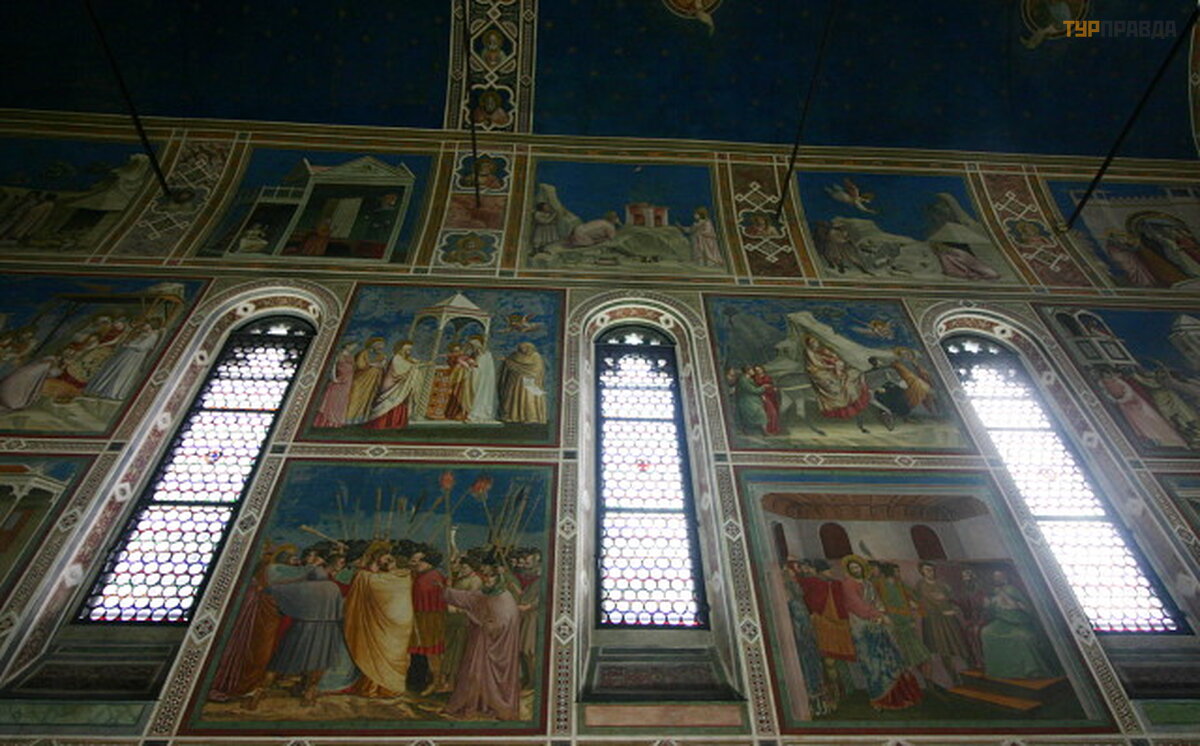




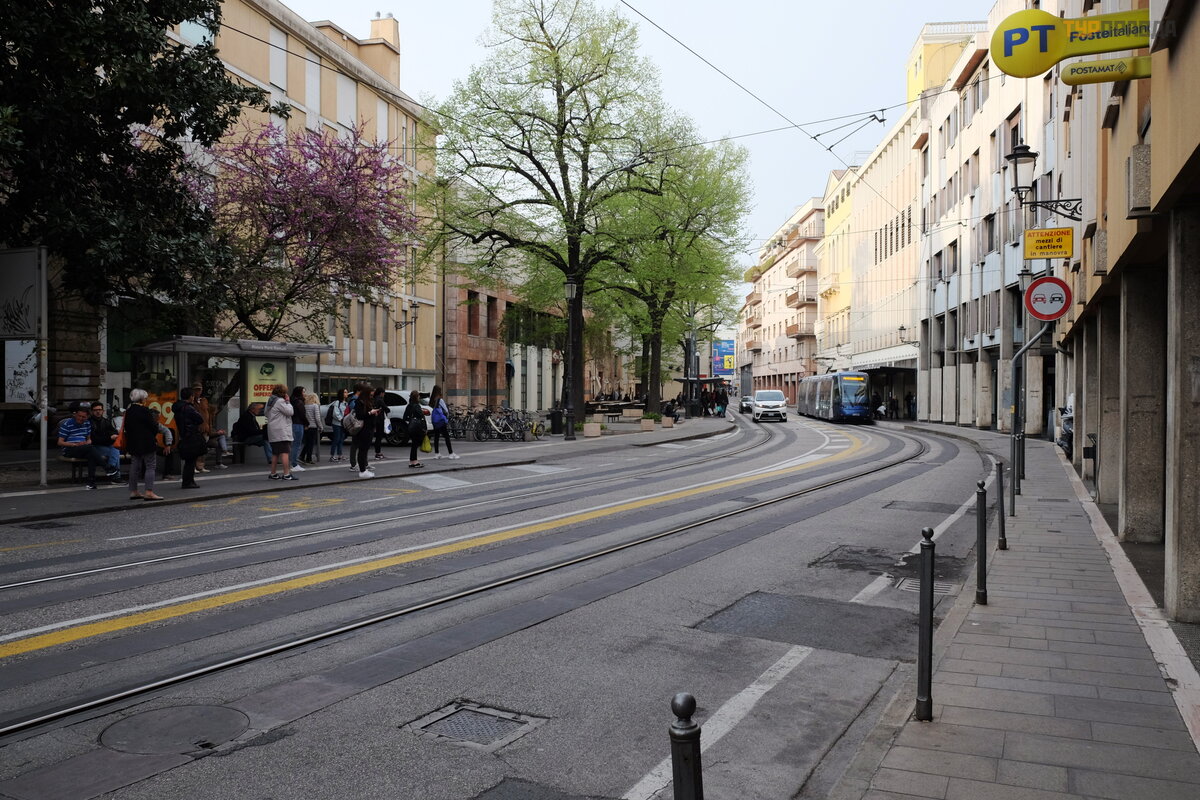
















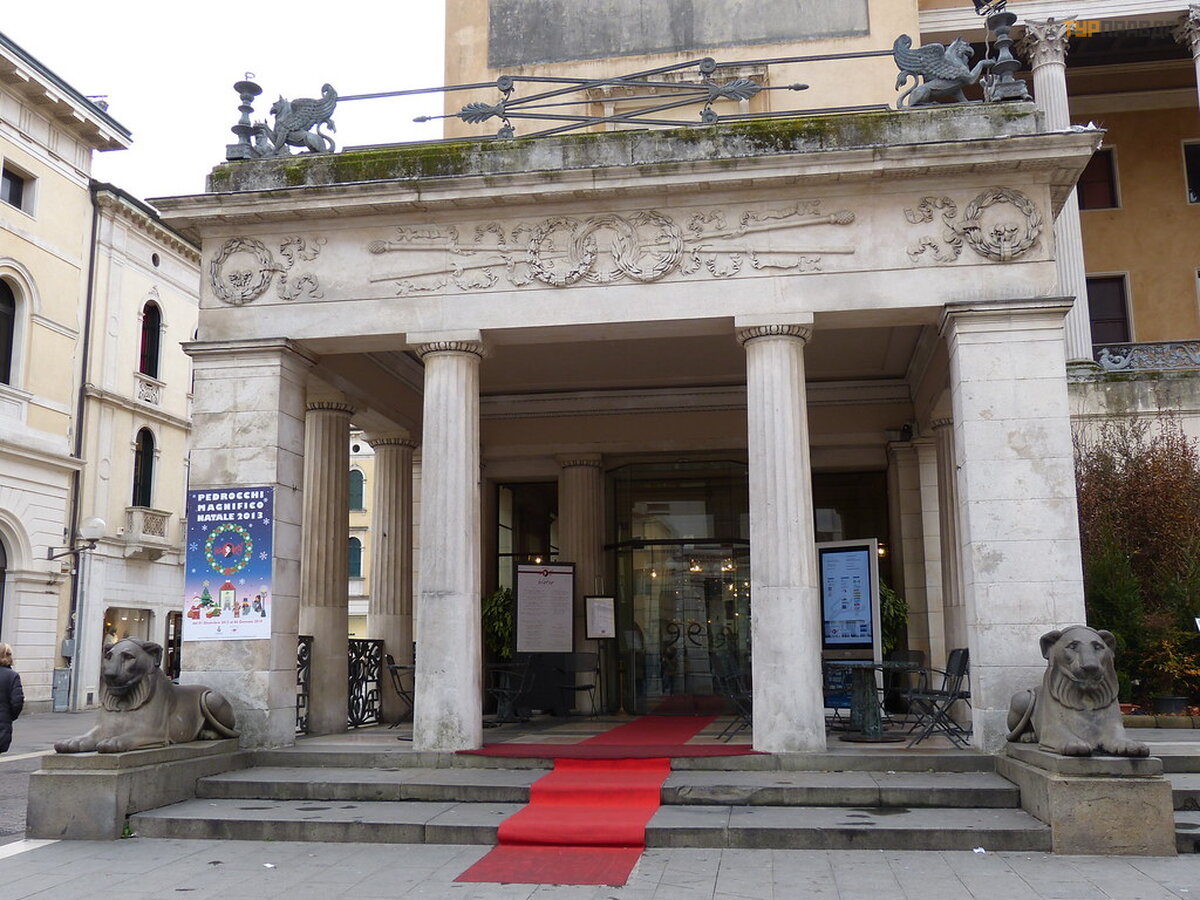







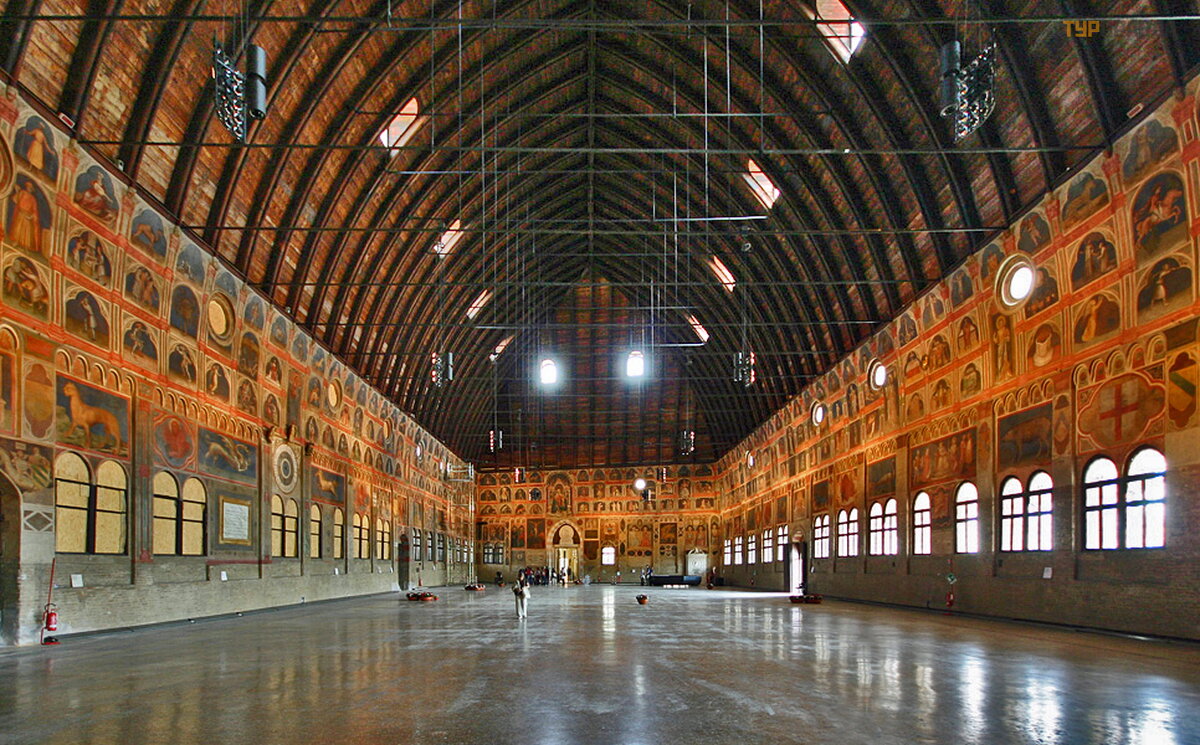



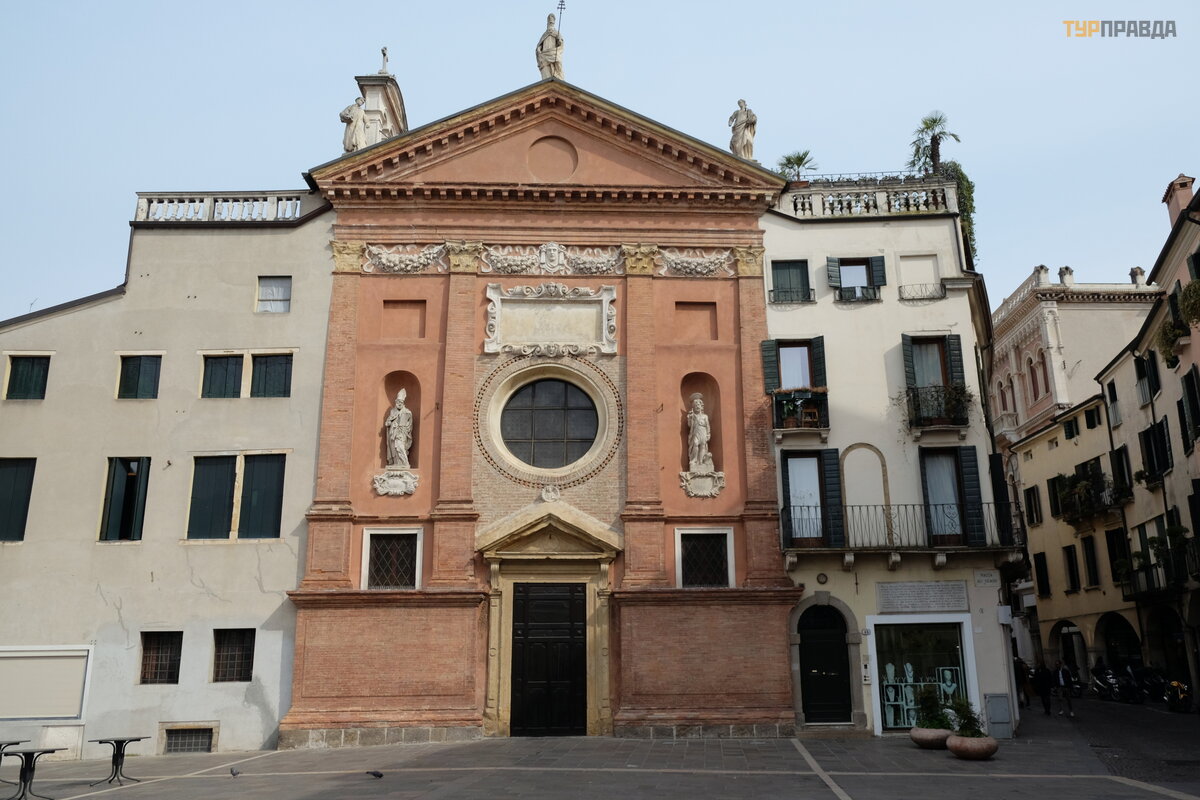




















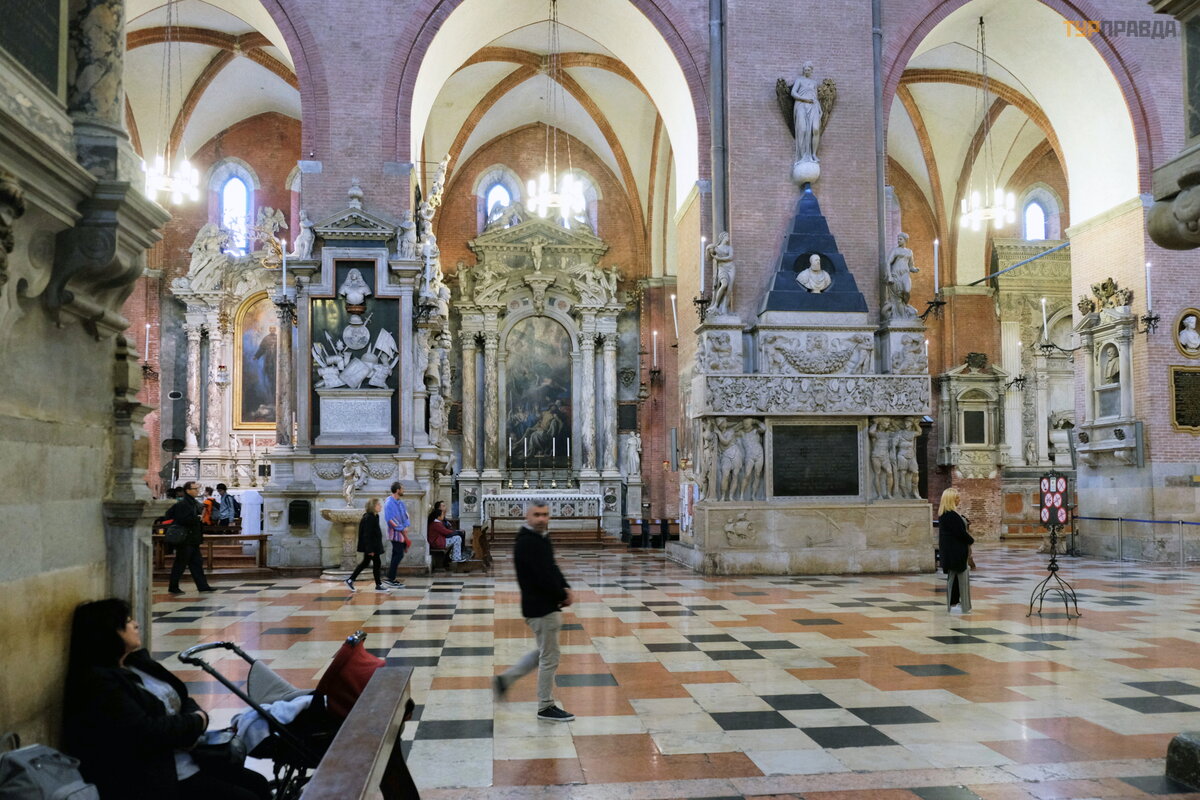


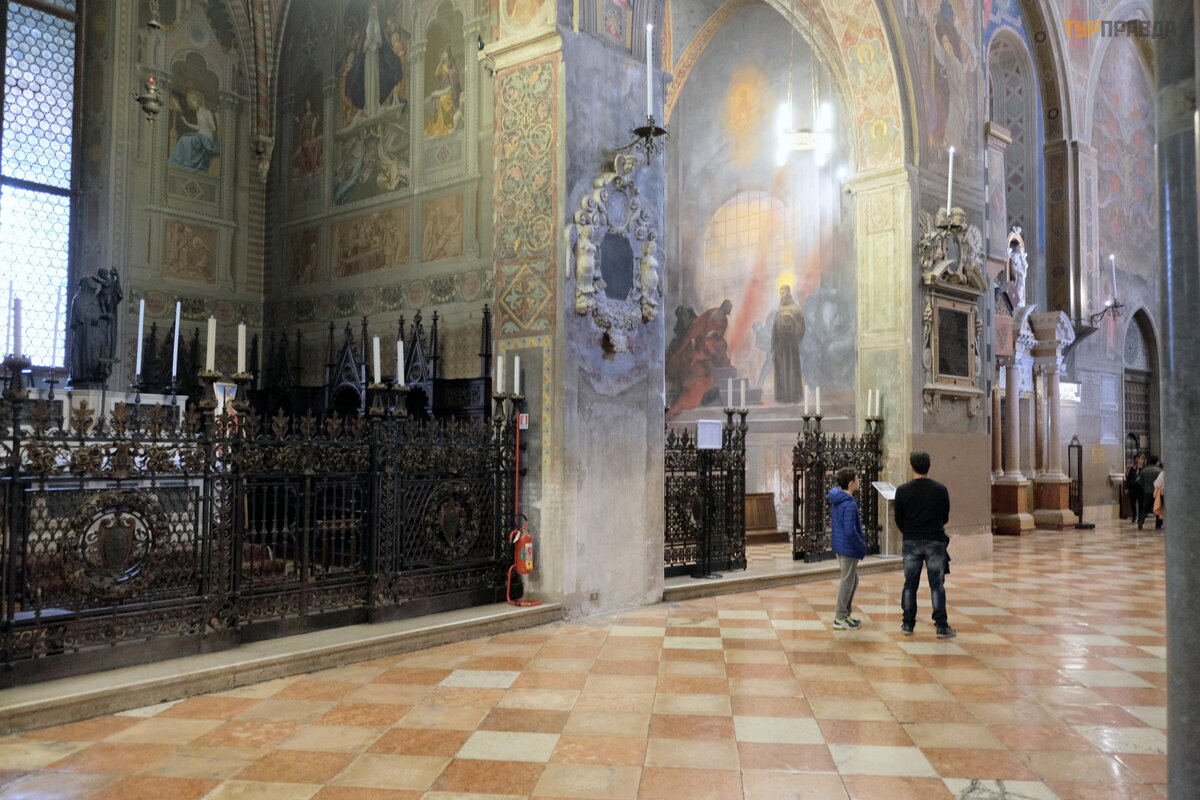














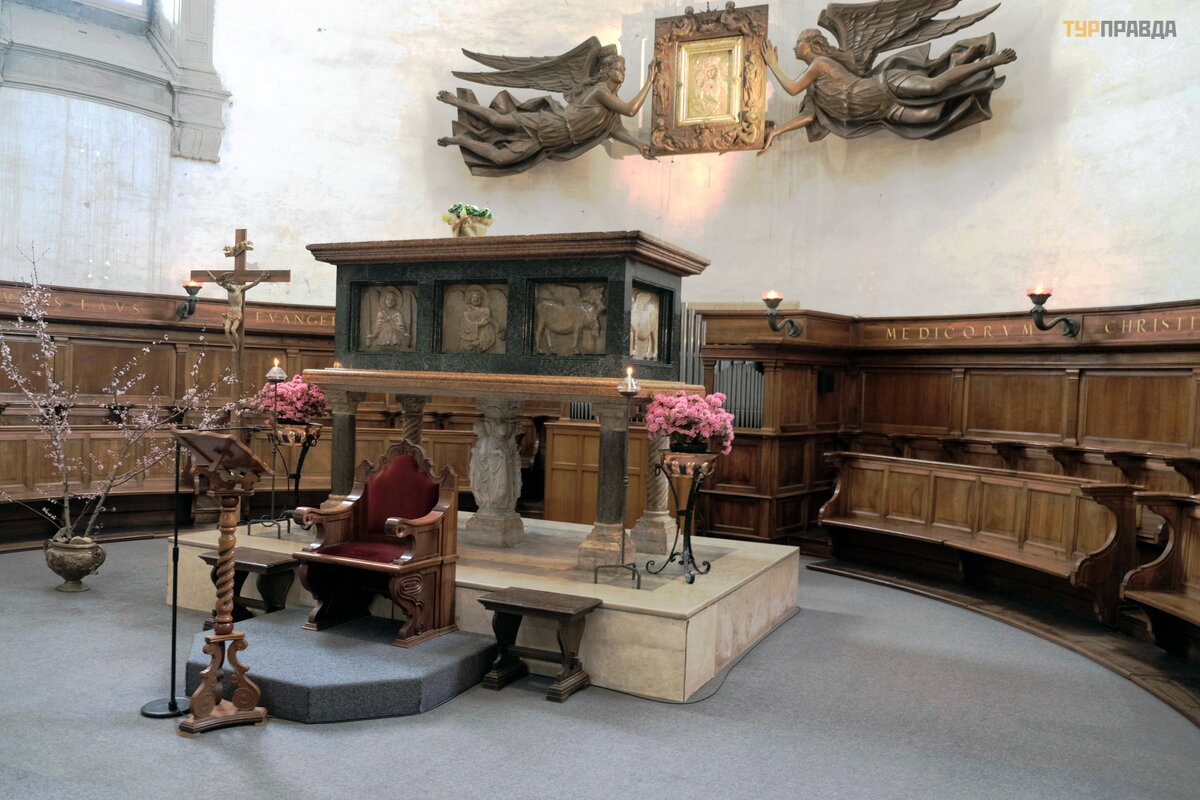





























The city is really impressive! So many interesting monuments!
Город действительно впечатляет! Столько интереснейших памятников!
The city is really impressive! So many interesting monuments!
Город действительно впечатляет! Столько интереснейших памятников!
Amazing! I really want to see with my own eyes...
Восхитительно! Очень хочется увидеть своими глазами...
Amazing! I really want to see with my own eyes...
Восхитительно! Очень хочется увидеть своими глазами...